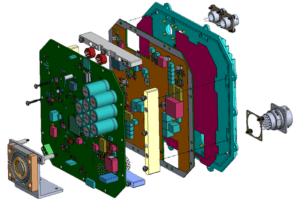Buried Via
Buried vias are a type of via used in multi-layer printed circuit boards (PCBs) and are an integral part of high-density interconnect (HDI) technology. Unlike traditional through-hole vias, which pass through the entire PCB, or blind vias, which connect an outer layer to one or more inner layers, buried vias are completely enclosed within the PCB. They are used to connect internal layers of the board without reaching the outer surfaces.
Key characteristics of buried vias include:
-
Location: Buried vias are located entirely within the PCB, connecting two or more internal layers. They are not visible from the outer layers of the board.
-
Manufacturing Process: The creation of buried vias is done during the layer stacking process of PCB manufacturing. Layers containing the buried vias are first processed and then laminated together with other layers to form a complete PCB.
-
Purpose: Buried vias provide electrical connections between internal layers of a PCB, contributing to the high-density layout by allowing more complex routing and freeing up space on the outer layers for other components.
-
Size: Like other HDI vias, buried vias can be very small, often similar in size to microvias. This small size is crucial for saving space and allowing for more compact and densely packed PCB designs.
-
Advantages: The main advantage of using buried vias is the ability to increase the density of the PCB layout without affecting the design of the outer layers. This makes them essential in complex electronic devices where space and weight are critical constraints.
-
Design Complexity: Incorporating buried vias into PCB designs adds complexity to the manufacturing process, as it requires precise alignment of internal layers and can impact the overall reliability and testing of the PCB.
-
Cost Implications: The use of buried vias generally increases the cost of PCB manufacturing due to the more complex and time-consuming process required to create them.
Buried vias are a specialized component of advanced PCBs, allowing for more complex and dense circuit designs by providing internal layer connections without impacting the board’s outer surface. They are essential in modern electronics where miniaturization and efficient use of space are key.



